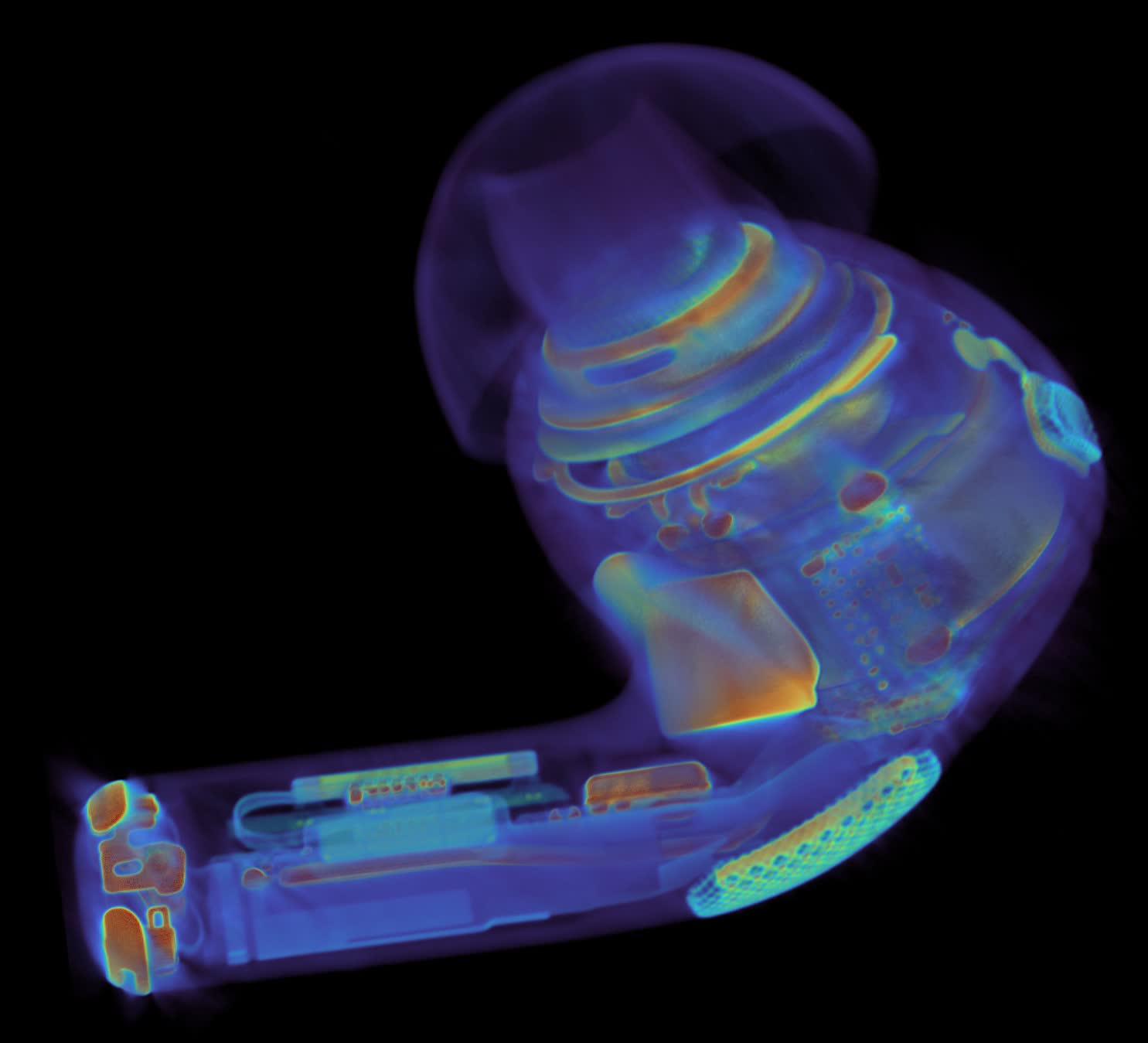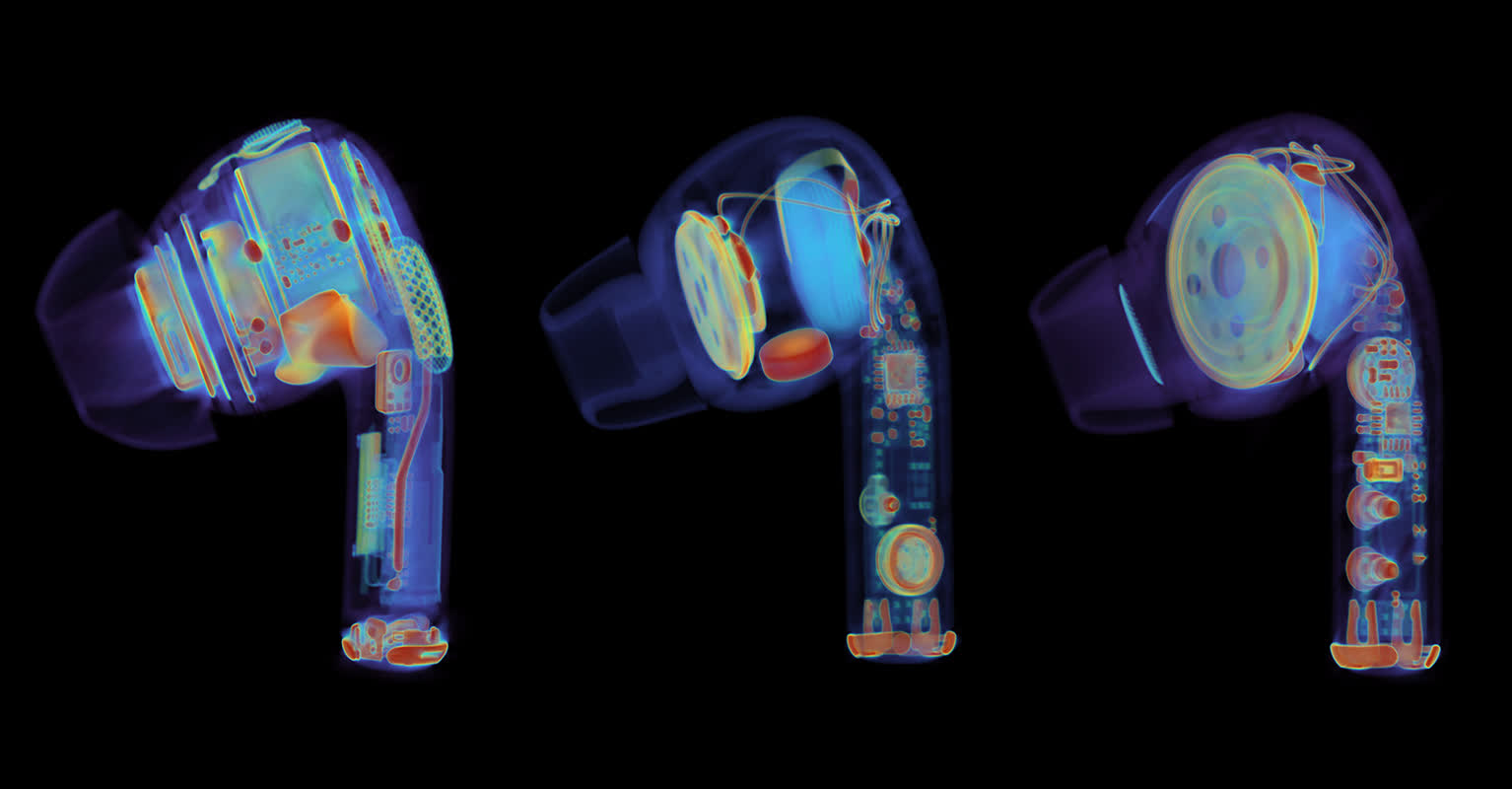In brief: Half-decent attempts at knockoff electronics usually focus on trying to match the outward appearance of the original as closely as possible to avoid detection. Under the hood, however, it's a whole different ballgame.
To illustrate the compromises that counterfeiters often make to get their clones out the door at minimal cost, Lumafield recently used a CT scanner to take a closer look at a set of genuine Apple AirPods Pro and compared them to a couple of fakes. The differences were obvious from the start.
Lumafield noted that the button cell batteries in each genuine earbud were designed to fit snugly in place. Both fakes used rectangular-shaped lithium-ion pouch cell batteries that were stuffed into circular spaces, a potential safety hazard.

Apple's offering is also far more complex in terms of internal circuitry, highlighting precise engineering and miniaturization. The knockoffs, meanwhile, utilized a collection of simpler off-the-shelf components and had fewer microphones. What's more, one of the fakes doesn't offer wireless charging as evident by its lack of charging coils; the other has the requisite coils, but lacks magnets that would hold the pods in place on the charger.
Worse yet, the fakes employ weighs that make them feel heavier to make up for their lack of parts. While not always the case, heft can be an indicator of quality in some electronic devices.
Counterfeits are usually pretty easy to spot, especially to the trained eye. Context clues like ridiculously low pricing can also help weed out fakes, as can poor build quality and performance that doesn't live up to expectations.
There are a few steps you can take to protect yourself during the buying process. When purchasing new, always shop with a reputable vendor and buy either directly from the manufacturer or through an established retailer. Buying used is more of a gamble, but with the risk comes the opportunity to save a bit of cash. Just remember – if a deal is too good to be true, it usually is.
